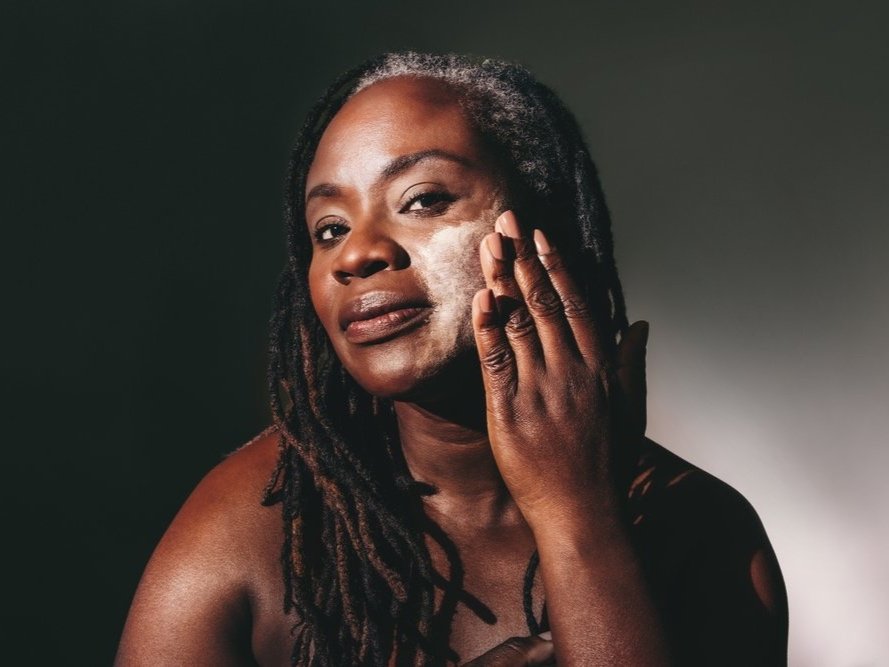Makeup: Five Personalized Foundation Options.
By Andrea Berman
“I grew up in a makeup chair. And to see the women around me getting ready was so aspirational. It’s about mothers and daughters, a girl watching her mom at a vanity table.” Drew Barrymore
My first beauty experiences hearken back to watching my mother apply her two beauty staples: Pond’s cold cream and some kind of heavy cover-everything-up foundation.
Many years have passed since then, and much has happened in the beauty world. The science of cosmetics has greatly advanced. Our perception of beauty has shifted and we are moving to a more natural skin first aesthetic. The lines between makeup and skincare are increasingly blurred by advances in science and culture.
Nowhere is this more evident than with foundation. In fact, foundation has reached a kind of bra-burning existential crisis. It’s not my mother’s cover-up anymore, for sure. So what is it? And do we want it?
The short answer is: maybe yes. Many choices exist that previously did not. Let’s explore the options.
THE FIVE TYPES OF FOUNDATION MAKEUP TODAY
The primary goal of foundation is to smooth out the skin and skin tone. The differences between types of products lie in the manner in which they do it (i.e. formulation and coverage), the resulting finish (i.e. sheer, dewy, matte) on the skin, and the skin benefits they provide.
Below is a chart that outlines five main categories of foundation and highlights respective benefits and coverage types–i.e. how completely the product conceals the skin.
Regular Foundations. Today’s version of my mother’s type of foundation is formulated a bit differently, and is less heavy on the skin, but the end goal is the same: a completely blemish-free smooth canvas.
Medium to Full Coverage Foundation. Products arrive in a liquid, cream, or paste format and are most likely the thickest of all five types. They may or may not include SPF.
Concealer as Foundation. Concealers are the very same products used to cover under eyes. By definition, they are medium to full coverage and are perfect for smaller areas on the face. This option is great for a quick simple makeup routine and a more natural look.
Hybrid Foundations. The next three types represent a newer category called hybrid foundations and are a blend of skincare and makeup. While these types of products offer various levels of skin coverage, they also enhance, improve, and protect skin in a variety of ways.
Color Correcting Cream (CC Cream). As the name indicates, CC Cream covers the skin by color correcting, calming redness, and evening out skin tone. CC Cream usually contains sunscreen along with skincare actives, or ingredients that nourish the skin. Most are medium to full coverage.
Beauty Balm (BB) Cream and Tinted Moisturizer. BB Creams and Tinted Moisturizers are similar types of products. They are generally lighter, with a thinner consistency compared to a CC cream (although there are some exceptions). Most are formulated with SPF and active ingredients like Niacinamide, Hyaluronic Acid, and more. Light to medium coverage.
Tinted Serum Foundation. The newest addition to the hybrid group, Tinted Serums, are a cross between a serum in terms of texture and a foundation relative to coverage. They contain skin active ingredients, SPF, and, depending on the product, offer a wide range of coverage from light to full.
With the many changes that have happened with foundation makeup, especially over the past 20 years or so, I encourage you to visit or revisit the plentiful options. You may be pleasantly surprised—not only by how it looks on your skin, but also by what it does for your skin.
Andrea is a beauty expert with a blog, The Beauty Maestra. dedicated to those of us in our fifties and beyond who are interested in transformative insights about our specific skin and beauty needs.


